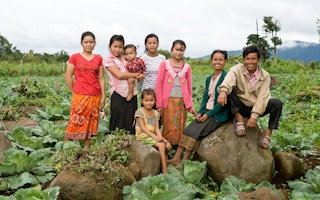This year’s World Food Day has the theme “Change the future of migration. Invest in food security and rural development.” Focusing on the food security-migration nexus is timely and warranted.
It’s time for collective action to dismantle the vicious circle of hunger and migration.
Today, the world faces the highest migration flows since World War II. Hunger and poverty, in addition to conflict and instability, are the main drivers of this phenomenon. Most of the world’s 763 million migrants have become internally displaced people within their home countries, relocating while searching for food and peace.
To make matters worse, global hunger is on the rise again. About 815 million people went to bed unfed or half-fed in 2016, compared to 777 million the year before. This trend, if left unchecked, will result in a mass exodus of rural populations to urban areas, potentially triggering an even larger human catastrophe.
Rural-urban migration is intensifying an already acute shortage of agricultural workers, which has emerged as one of the main obstacles to food production in many countries. This, in turn, results in more outmigration from rural areas and the agricultural sector.
“
Our repeated failures to abate global hunger demonstrate that we need to do something different to promote food security in ways that reduce migration.
Similarly, climate change and food production are also connected; the later suffers from and contributes to the former. And let’s not forget that the agricultural resource base is shrinking, and agricultural productivity is declining.
Against this backdrop, the most pertinent question is, where should we invest to enhance food security and thereby help to slow down migration?
Last June, ADB organised an international workshop on knowledge solutions for food security and agricultural transformation. The broad conclusion was that agriculture as a sector rarely innovates itself, but rather benefits from other branches of science. New opportunities can come from new technology such as drones or remote sensors.
However, shifting to knowledge-intensive agriculture faces many formidable hurdles. Participants in the workshop identified 4 priority areas for investment to overcome these obstacles and promote food security.
First and foremost, we need customised knowledge and a knowledgeable farming community to boost knowledge-intensive agriculture. This means supporting high-tech agricultural universities and/or institutes, and providing farmers with the latest innovations and the know-how to use them effectively.
Mobilising investments
ADB plans to invest about $400 million to development curriculums, support laboratories, forge partnerships with world class universities, and strengthen links between academia and industry across the entire agricultural supply chain in several countries in Asia and the Pacific.
Second, data enables knowledge-intensive agriculture. Private companies are collecting a wide range of data that is pertinent to food and agriculture. But since smallholders often lack access to data, we must invest to build an appropriate, accessible, and affordable provider-user networks.
ADB is currently working to facilitate the transmission of data-driven technology from production to marketing. It also hopes to develop with the private sector a business model to make data-driven agricultural services available to smallholders.
Third, investment is also necessary at the mid-end (processing and storage) and front-end (distribution and retail) stages of the food chain to reduce post-harvest loss.
ADB is working to mobilise more investment to develop wholesale markets with adequate logistics, storage and quality infrastructure in laboratory testing facilities, packaging, and transportation services. This leads to better connectivity between producers and end users, as ADB staff learned during a recent visit to agricultural cooperatives in Spain.
Last but not the least, the main thrust for knowledge-intensive agriculture involves collecting data, turning it into information, turning information into knowledge, and finally farmers applying this knowledge in the field.
It’s true that finance is needed at all levels, but assisting farmers with credit is often cumbersome.
To feed the world’s growing population, we need to invest in partnerships between digital platform providers and financial institutions to bridge the access to finance gap, for instance via using ICT to do background checks on clients and performance monitoring, or managing loans electronically.
Our repeated failures to abate global hunger demonstrate that we need to do something different to promote food security in ways that reduce migration. The transformation from the current resource-intensive agriculture to future knowledge-intensive agriculture is the way forward.
We all need to join hands so we can mobilise the required investment in the right areas to make this transformation possible.
Amy Leung is the director-general for Sustainable Development and Climate Change Department at the ADB.
This piece was published with permission from Asian Development Bank.


















